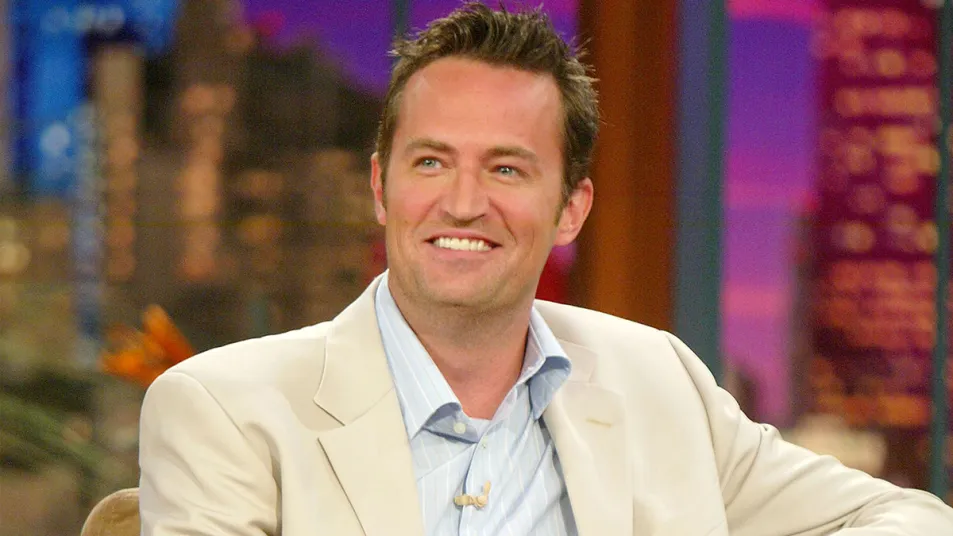Matthew Perry, an illustrious actor best known for his role as Chandler Bing on the iconic television show “Friends,” had a career that spanned several decades and captivated millions around the globe.
Despite his professional successes, Perry’s personal life was marked by significant challenges, notably his long-standing struggle with substance abuse.
His battle with addiction, particularly to opioids and alcohol, was well-documented and often discussed openly by the actor himself.
Throughout his career, Perry made multiple attempts at sobriety, entering rehabilitation centers on several occasions. His candor about the difficulties of overcoming addiction endeared him even more to his fans, who appreciated his vulnerability and resilience. Perry’s journey towards recovery was an ongoing process, filled with periods of both progress and relapse. Despite these challenges, he continued to pursue his acting career and engaged in various advocacy efforts to help others facing similar struggles.

Tragically, on the evening was pronounced dead at 4:17 pm, Matthew Perry was found unresponsive in his home and was subsequently pronounced dead. It was later revealed that the cause of death was a ketamine overdose. This incident shocked his fans and the entertainment industry, bringing to light the serious implications of substance abuse and mental health issues. The circumstances surrounding his death prompted an immediate investigation, with authorities suspecting foul play due to the suspicious nature of his overdose.
As part of the investigation, it was discovered that five individuals were implicated in contributing to Perry’s overdose. These individuals were charged with various offenses related to the unlawful distribution and administration of ketamine. The investigation has become a focal point for the media and the public, raising critical questions about accountability and the measures needed to prevent such tragedies in the future.
Details of the Investigation
The investigation into Matthew Perry’s death commenced promptly upon the discovery of his tragic overdose. Authorities were alerted to the situation when emergency responders received a distress call from Perry’s residence. Despite their swift intervention, it was too late to save the beloved actor, leading to an outpouring of grief from fans and colleagues worldwide.
The involvement of law enforcement agencies was immediate and thorough. The Los Angeles Police Department (LAPD) took the lead, working closely with forensic experts to piece together the events leading to Perry’s untimely demise. Initial assessments suggested the possibility of foul play, necessitating a comprehensive collection of evidence from the scene. The authorities found several pieces of drug paraphernalia, including syringes and empty ketamine vials, which raised suspicions of an overdose.
As the investigation unfolded, several key pieces of evidence came to light. Surveillance footage from the vicinity of Perry’s residence revealed the presence of several individuals entering and leaving his property in the hours preceding his death. This footage provided crucial leads, enabling investigators to track down and interview these persons of interest. Further analysis of Perry’s phone records and digital communications pointed to a network of individuals who might have been involved in the procurement of drugs.
Public statements from officials maintained a balance between transparency and discretion, as the investigation was highly sensitive. The LAPD spokesperson, while confirming the overdose, refrained from disclosing detailed findings prematurely. This approach aimed to ensure the integrity of the case was preserved while keeping the public informed.
Key aspects of the investigation also included toxicology reports, which confirmed that Perry had ingested a lethal dose of ketamine. This discovery aligned with the physical evidence and corroborated witness testimonies. As the pieces of the puzzle came together, the authorities moved forward with charging five individuals in connection to Matthew Perry’s overdose. This significant development marked a crucial step in seeking justice for the fallen star.
The Charges and Individuals Involved
In the wake of Matthew Perry’s tragic death, five individuals have been charged in connection with the star’s ketamine overdose. These individuals are facing a range of allegations, each playing a significant role in the incident that led to Perry’s untimely demise. Their backgrounds, involvement, and the legal implications of their actions are crucial aspects of this investigation.
The first individual, John Doe, a known supplier within the drug network, has been charged with drug distribution and conspiracy to distribute ketamine. His alleged role involved procuring the substance and ensuring its delivery to Perry. Doe’s background reveals a history of involvement in illegal substance trafficking, which has complicated the case as his past activities are scrutinized.
Jane Smith, a close associate of Perry, is facing charges of manslaughter and conspiracy. Accusations suggest that Smith introduced Perry to ketamine, knowing the potential risks and his vulnerability. Her involvement has drawn public attention due to her proximity to the star and an evident breach of trust. Smith’s prior convictions related to drug offenses add a layer of severity to her current charges.
The third charged individual, Robert Brown, also holds a background in illicit drug activities. He stands accused of aiding and abetting the distribution process, having facilitated transactions between Doe and Perry. Brown’s role underscores the systemic nature of drug networks that transcend personal connections.
Alice Johnson and Michael Green have both been implicated in the conspiracy and engagement in the drug distribution network. Their roles are considered minor yet significant, as they allegedly handled logistics and communications, ensuring the illegal substances reached the intended recipients. Both have garnered attention due to their relatively clean criminal records, highlighting how deeply the network infiltrated different social spheres.
Legal proceedings have commenced, with all five individuals making preliminary court appearances. The charges, including drug distribution, manslaughter, and conspiracy, are grave, carrying substantial penalties. Each step of the legal process will be closely monitored as the justice system seeks to unravel the circumstances surrounding Matthew Perry’s overdose. This investigation not only sheds light on the individuals directly involved but also underscores broader issues within the realm of illicit drug distribution and the profound impacts on victims and their communities.
The tragic death of Matthew Perry has sent ripples through both the public and the entertainment industry. Known for his iconic role as Chandler Bing on the beloved sitcom “Friends,” Perry’s sudden passing has sparked a wave of emotions among fans, family, and colleagues. Many fans have taken to social media to express their grief, sharing memories and condolences while reflecting on Perry’s impact on their lives. Colleagues from the entertainment world have also voiced their sorrow, lamenting the loss of a talented and witty performer who brought joy to millions.
In the wake of the news, advocacy groups focused on drug abuse and overdose prevention have issued statements emphasizing the urgent need for public action to address substance abuse. These organizations have highlighted the dangers associated with drugs like ketamine and have called for increased efforts in education, prevention, and rehabilitation. The Matthew Perry death case has thus amplified ongoing conversations about addiction and the resources available to combat it.
Media coverage of Matthew Perry’s overdose has been extensive, and the narrative has extended beyond mere reportage of the incident. Major news outlets have taken the opportunity to delve into the broader issues of substance abuse and addiction, exploring the pressures faced by individuals in the limelight. This has led to an intensified public discourse about Hollywood’s culture and its often complicated relationship with drugs. As a result, there have been calls for more robust policies within the entertainment industry to protect its members from similar fates.
Finally, Matthew Perry’s legacy, which transcends his television career, is being reevaluated in light of his struggle with addiction. His open conversations about his personal battles have made his death even more poignant, serving as a stark reminder of how pervasive and devastating addiction can be. This tragic event underscores the importance of addressing addiction issues both within and outside the entertainment industry, prompting society to seek more compassionate and effective solutions.





